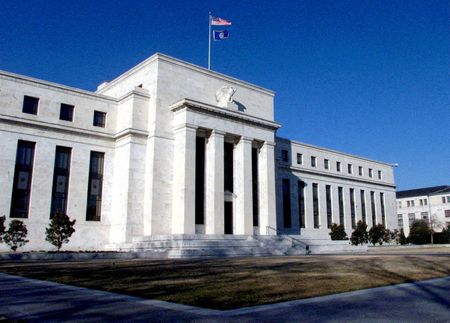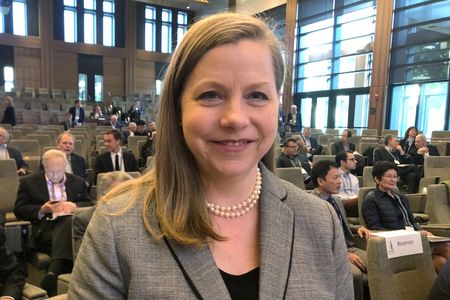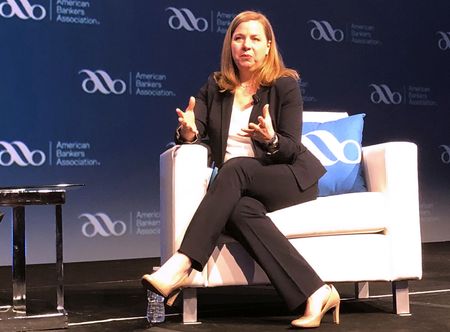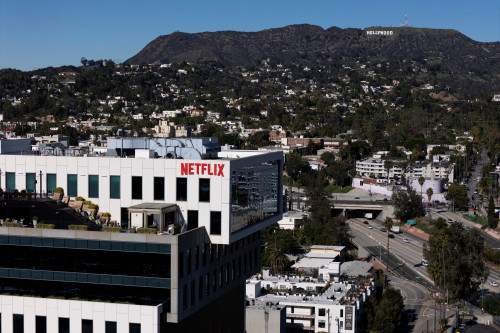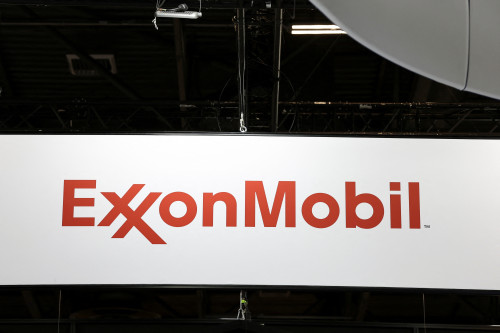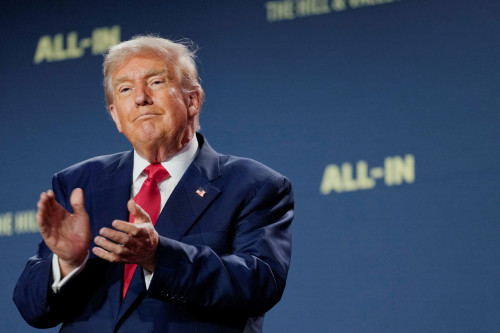By Ann Saphir
(Reuters) -U.S. Federal Reserve officials say that monetary policy will need to stay restrictive for “some time” to bring inflation back down to the Fed’s 2% target, but their unity around that phrase masks an ongoing debate over another possible rate hike this year.
“I remain willing to support raising the federal funds rate at a future meeting if the incoming data indicates that progress on inflation has stalled or is too slow to bring inflation to 2% in a timely way,” Fed Governor Michelle Bowman said Monday in prepared remarks to a banking conference.
Despite considerable progress, she said, “Inflation continues to be too high, and I expect it will likely be appropriate for the (Fed) to raise rates further and hold them at a restrictive level for some time.”
Inflation, as measured by the consumer price index, is down from around 9% last year to around 3.7% at last read, slowed at least in part by the Fed’s 5.25 percentage points of interest-rate increases over the last 18 months.
The Fed targets 2% inflation.
Given that progress, U.S. central bankers last month opted to keep the policy rate in its current 5.25%-5.50% range even as most signaled another rate hike would likely be needed before year’s end.
Speaking at a separate event in New York on Monday, Fed Vice Chair for Supervision Michael Barr said he believes rates are now “at or very near” a sufficiently restrictive level.
“In my view, the most important question at this point is not whether an additional rate increase is needed this year or not, but rather how long we will need to hold rates at a sufficiently restrictive level to achieve our goals,” Barr said in remarks prepared for delivery to the Forecasters Club of New York. “I expect it will take some time.”
Fed Chair Jerome Powell, who on Monday was visiting York, Pennsylvania to get an up-close view of how businesses and workers are experiencing the economy, last month also said restrictive policy would be needed “for some time,” as did the influential chief of the New York Fed, John Williams, on Friday.
Meanwhile, speaking Monday evening, Cleveland Fed leader Loretta Mester also said the Fed’s work is likely not done.
“I suspect we may well need to raise the fed funds rate once more this year and then hold it there for some time as we accumulate more information on economic developments and assess the effects of the tightening in financial conditions that has already occurred,” Mester said in a speech to a group in Cleveland.
Fed forecasts published last month show there is some divergence – though as a group they expect fewer rate cuts next year than they did in June, only a bare majority see rates ending 2024 any higher than 5%, with 9 of 19 policymakers expecting them to be lower.
The same Fed forecasts also show policymakers as a group expect stronger economic growth and a stronger job market than they had expected just three months earlier. But they also made only small adjustments to their forecasts for inflation.
“The only way to square those would be to have a somewhat higher-for-longer rate path,” Richmond Fed President Thomas Barkin said in an interview on Bloomberg’s “Odd Lots” podcast conducted last Thursday but aired Monday. “I think there is case to be made that the U.S. economy is a lot more resilient than we thought it was, resilient to interest rate hikes, resilient to all the shocks we’ve talked about.”
Even so, he said, “One of the things I liked about our posture coming out of the last meeting is that, with demand relatively strong by all accounts, the labor market still relatively strong, and inflation cooling, we have the latitude to say, let’s see how this develops.”
(Reporting by Dan Burns, Pete Schroeder, Michael S. Derby and Ann Saphir; Editing by Anna Driver, Andrea Ricci and Cynthia Osterman)

